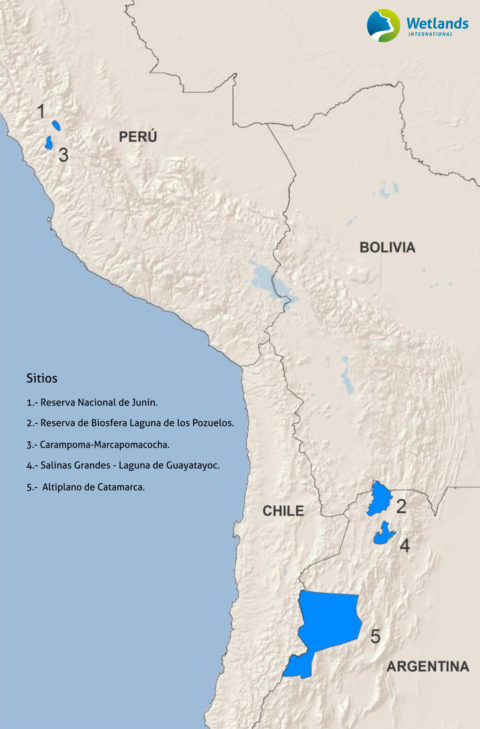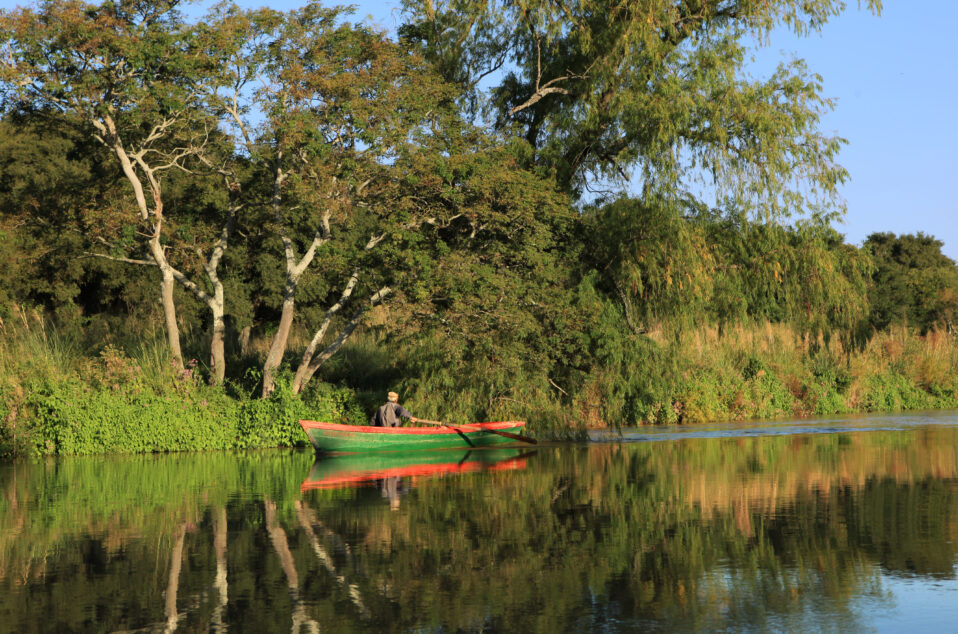Saving High Andean Wetlands for People and Nature Programme

What Is the Saving High Andean Wetlands for People and Nature Programme About?
We have been working with local communities to improve the High Andean Wetlands conservation status since 2017, carrying out restoration and wetland management actions, more sustainable practices concerning cattle grazing and peat extraction.
We have worked towards agreements with municipal, provincial and national officials with the aim of developing and implementing management plans and an enhanced governance in the sites, with the collaboration of the local communities.
Our objective is ensuring that mining activities comply with the legal, social and environmental standards and with the rights of local communities. Universities and communities accompanied us to build knowledge and strategic evidence so that a more sustainable management of natural resources is achieved.
In the Programme implementation, we have worked with leading local organisations from each country, governmental organisms responsible for site management, and experts in different fields.
The Vision of the Programme
We aim to restore the health of High Andean Wetlands in the long term in order to protect its unique biodiversity and the livelihoods of communities which depend on them, and also to allow wetlands to continue regulating water and carbon for society’s benefit.
Where do We Work?
A slideshow with 5 images
The slider is set to loop infinitely.
The following five endangered High Andean Wetland systems are of major importance for biodiversity and the welfare of the communities which depend on them to live: Junin Lake and Carampoma-Marcapomacocha (Peru), and Laguna de los Pozuelos, Salinas Grandes and Guayatayoc Lagoon, and Wetlands in the Altiplano of Catamarca in Argentina.

Main Work Areas
The four areas the Programme are articulated with one another so that the objectives, which pursue improving the conservation status of the five wetlands where we work, are achieved.
Cattle Grazing Sustainable Management
We work with producers and local organisations towards the implementation of cattle grazing sustainable practices in the High Andean Wetlands. We have developed guidelines and sustainable management plans approved and adopted by the communities and then explained in best practices handbooks. To be able to accomplish this, we have worked with biodiversity and productivity studies in pursuit of the improvement of cattle and wetland status, and thus, their livelihoods.
Marsh and Peatbog Management and Restoration
Wetland management and restoration focuses on mitigating overgrazing and peat extraction, contributing to efficient use and improvement in management and availability of wetland water, and increasing native grassland productivity to reduce the pressure of grazing in the wetland. We have drawn up handbooks on best practices related to grazing and wetlands, and have trained local communities to succeed in the Programme objective.
Responsible Mining Practices
We have trained local communities so that they sharpen their technical skills at defending their rights for a healthy environment, in decision-taking processes. We have also worked with governments to introduce policies and management plans which acknowledge the ecosystem value of wetlands.
Our Achievements (2017-2023):
- There are 690 cattle-raising families participating in the Programme and following more sustainable cattle-grazing practices.
- There are 360 cattle producers trained in best practices for grazing management which allow for wetland conservation and restoration and for people’s livelihoods.
- There are more than 22,000 ha under sustainable management of cattle-grazing as part of an agreement with local communities.
- There are more than 360 ha of wetlands under management of restoration actions.
- There are 13 houses in rural areas of Pozuelos which use water more efficiently as a result of solar water pumps.
- There are 175 residents trained in assessing the environmental impact of lithium mining.
- There are 42 communities which are more informed and empowered to be able to defend their rights against irresponsible lithium mining.
Key Partners
- Andean Ecosystems Association (ECOAN)
- Environment and Natural Resources Foundation (FARN)
- YUCHAN Foundation
Allies
- Government Secretariat of Environment and Sustainable Development, Argentina.
- Ministry of Environment, Peru.
- Administration of National Parks, Argentina.
- National Service of Natural Areas Protected by the State (SERNANP), Peru.
- National Institute of Industrial Technology (INTA) EEA Abra Pampa, Argentina.
- INTA IPAF, Argentina.
- Undersecretariat of Family Farming (Jujuy Office), Argentina.
- Ministry of Environment of Province of Jujuy, Argentina.
Funded by
- DOB Ecology








